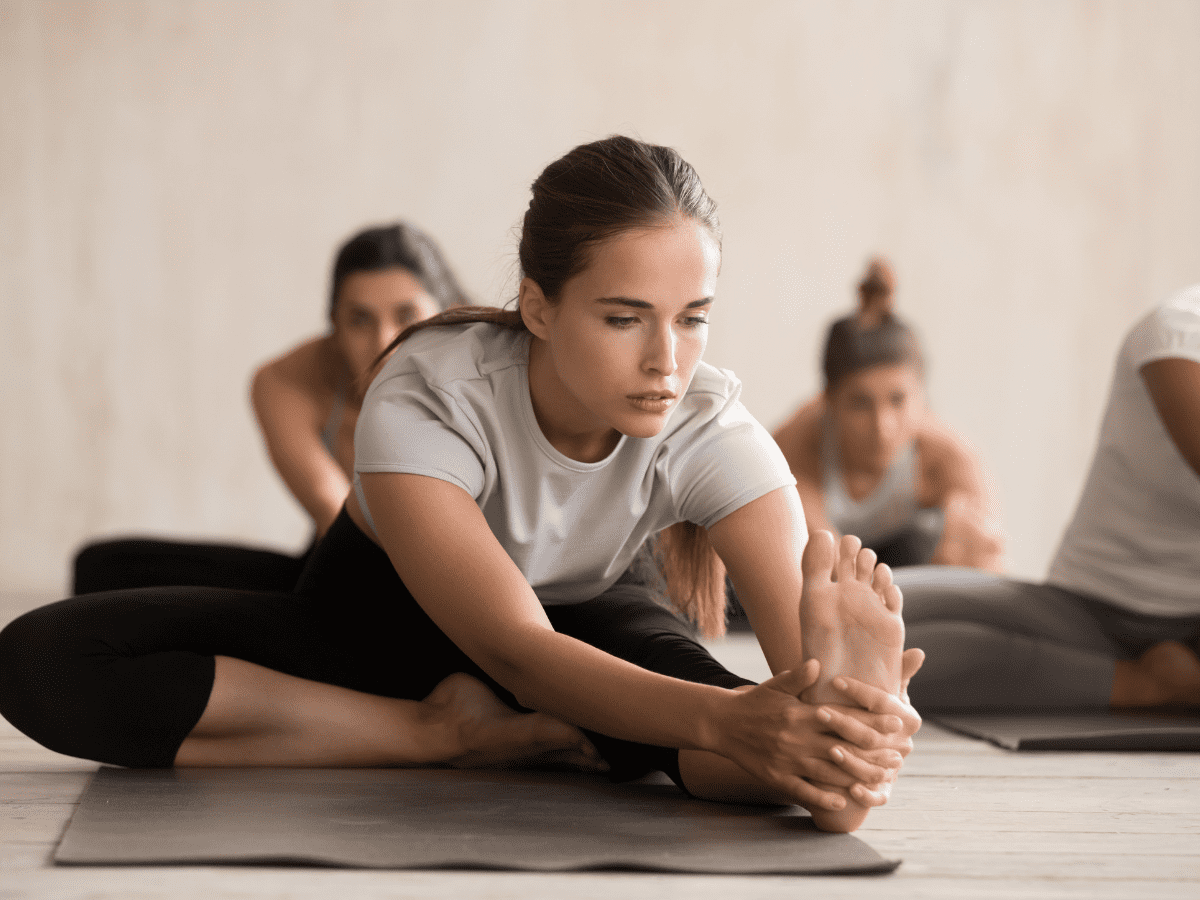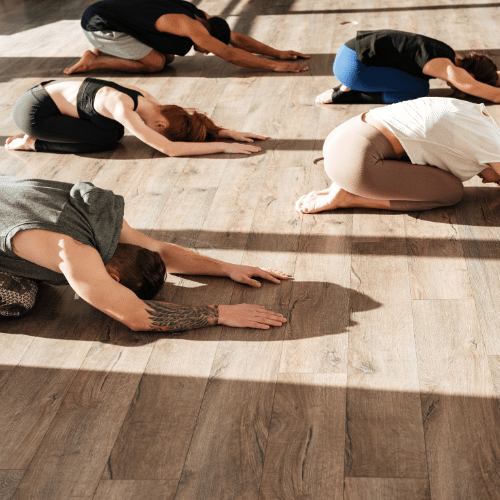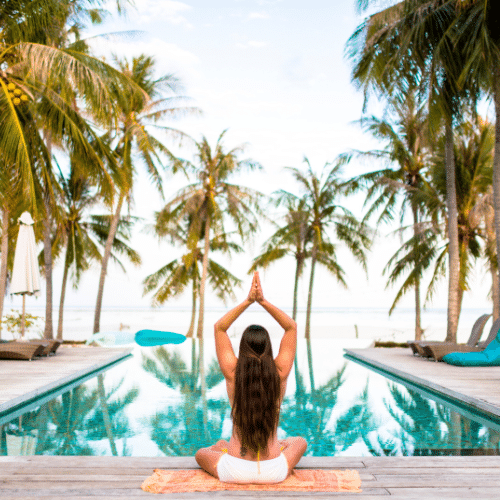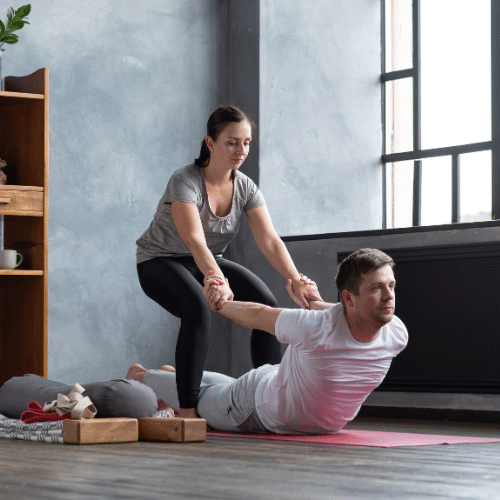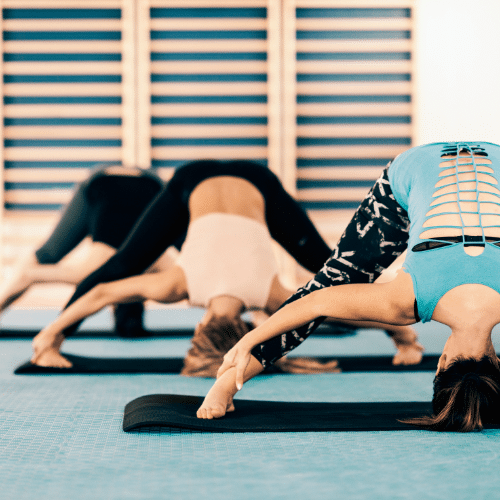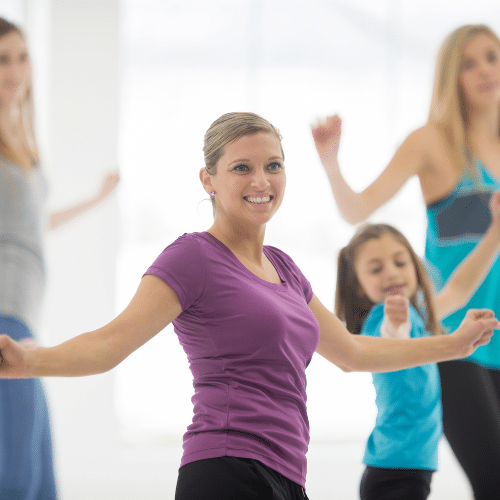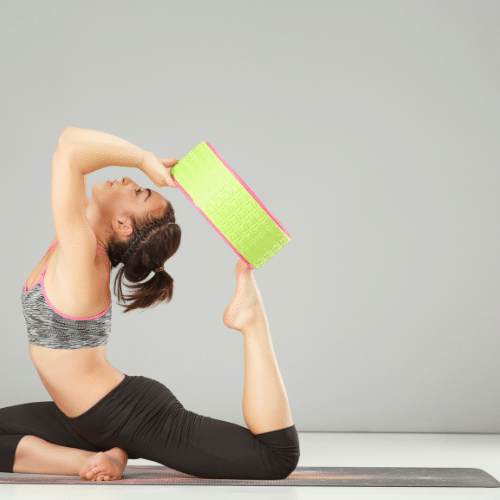Every yogi will eventually come across a pose called Janu Sirsasana. The name means “head to knee pose” in Sanskrit and is a prevalent seated posture in yoga classes, usually towards the end of the practice when the body is warmed up. You can also do a variation of this pose called Dandayamana Janushirasana standing head to knee pose.
Both poses offer many physical and mental health benefits but require some background understanding to perform correctly. This article will discuss Janu Sirsasana and some common variations in detail to get all the incredible benefits of this well-known yoga pose.
The Benefits of Adding Janu Sirsasana to Your Practice
Some people love yoga because it allows the body to fall into a state of peace and tranquility. Others herald it as one of the best ways to improve flexibility and range of motion. While some poses are more suited for one over the other, Janu Sirsasana is known to be incredibly beneficial for the body’s stress response and muscle flexibility. But it does have three main benefits that target specific areas of the body.
Lengthening Hamstrings
It doesn’t matter if you have a more sedentary lifestyle and work at a desk or are an avid runner who likes to stay active – everyone can end up with tight hamstrings. Janu Sirsasana is the perfect pose for gently edging away at tight hamstrings, groin, and lower back. If your hamstrings are so tight that this pose is too difficult or painful, there are variations you can do that can help you build up to a full head to knee pose.
Improving External Rotation of the Hip
Hips are another part of the body that clings desperately to stress and tension, and many people have tight hips. The legs, hips, and glutes all work as a unit to ensure movement of the lower body is fluid. If any of these are tight or not working well enough, your back could overcompensate, and you may feel pain. Improving your hip’s external rotation helps keep the muscle groups in that area loose and comfortable.
Calming the Mind
Many describe yoga as a peaceful practice, but some poses are more calming than others. In the case of Janu Sirsasana, bowing the head brings the mind closer to the earth. Poses with forward folds tell the mind you feel safe and comfortable, and coupled with breathing techniques, you can reduce feelings of stress. It’s one of the big reasons many yogis do Janu Sirsasana at the end of practice as one final relaxing pose before they leave the mat.
Performing Janu Sirsasana
Doing your first head to knee pose might seem easy, but you still want to do it correctly to reap the maximum benefits. The goal of Janu Sirsasana isn’t touching your head to your knee; it’s focusing on keeping a long spine and breathing deeply into your back and hamstrings for a good stretch. Here’s how to do this pose:
- Start by sitting on your mat in staff pose. If you’re new to yoga, the staff pose is sitting upright with your legs out long. Place your hands behind your hips and press the palms into your mat so they lay flat.
- Inhale deeply as you lengthen your spine and pull your right knee towards you, bringing the sole of your right foot to meet the inner part of your left thigh.
- Another deep breath as you reach your hands up to the sky. Hinge at your hips and lower the upper half of your body down to your extended leg. Your fingertips should be reaching for your toes. Hold and continue breathing.
You should aim to get your fingertips as close to your toes as possible, but don’t strain and avoid rounding your spine.
Modifying Head to Knee Pose
Everyone’s body is different and may need extra help to do Janu Sirsasana comfortably. But this pose is flexible enough to see many benefits, even with some slight modifications.
If you have tight hamstrings, don’t push yourself and go too far. Instead, you can come to the point where you can comfortably keep the hamstring straight. This can help you open up your hips and reduce back pain.
People with sensitive knees may worry about the pressure from bending the knee and folding over. You can mitigate this by using a yoga block or a blanket underneath the knee to help support it.
Remember, you must keep your back straight. You can even stay upright and perform the pose with a strap or towel to avoid rounding the back.
Common Janu Sirsasana Variations
The four main variations of Janu Sirsasana each have their place in your practice as they all focus on slightly different body parts. Note that some variations are more advanced, so only perform these poses if you feel comfortable.
The first variation is the most common and the one detailed above. In the second version, you extend your leg forward and sit on the opposite heel to encourage a light spine twist and strengthen the ankle joint.
The third variation is more advanced: you extend either leg and rotate the opposite foot so the ball of your foot is on the floor, but the heel is pointing up. The arch of the foot can rest on the inner thigh. You should only attempt this variation if you have no hip rotation or foot pain issues.
Finally, the standing variation, head to knee pose, mimics the first variation. If you’re stretching out your right leg, you’ll be standing on your left, folding over, so your head meets your right knee. This pose has impressive benefits, including building strength and concentration, but it is safer to practice if you’re a more seasoned yogi.
Practicing Janu Sirsasana With Confidence
With the help of this guide, you’re ready to start adding this highly beneficial posture to your daily practice. The consistent practice of Janu Sirsasana could improve your stress response and flexibility to move through life with comfort, compassion, and fearlessness.
If you’re looking for a space to further your practice, come flow with us at Zuda. Our experienced teachers offer various class types – we’re offering 4 weeks of classes for $40, so it’s the perfect time to find your favorite.


